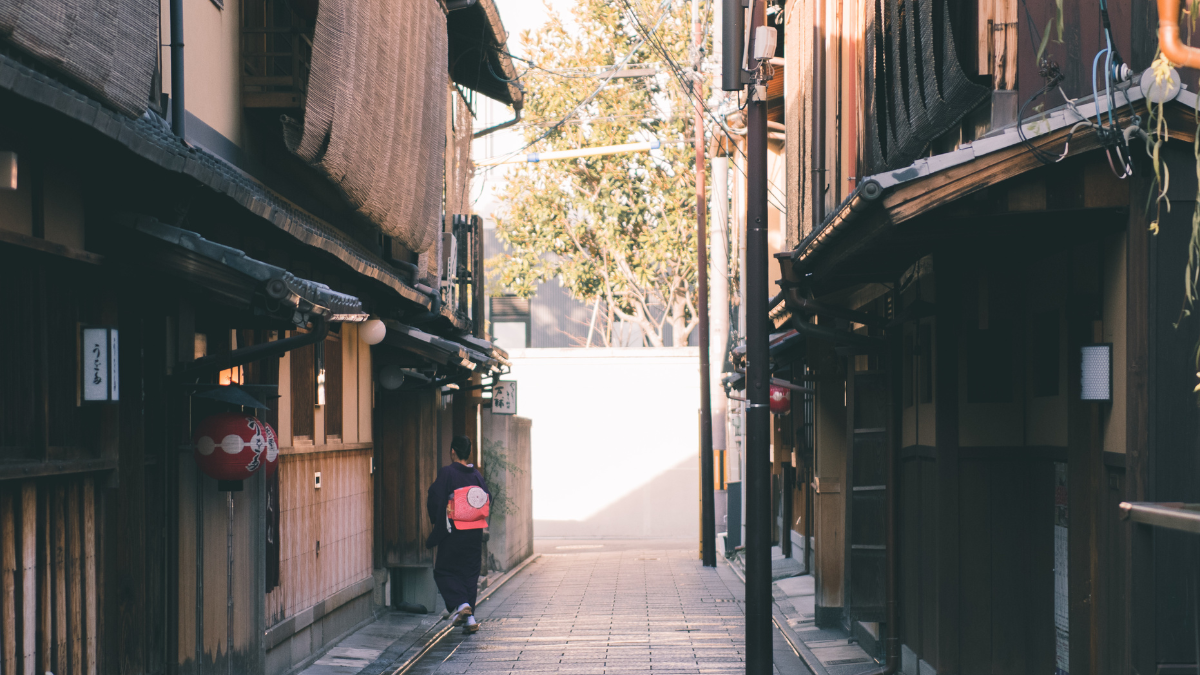The trick to knowing where to see geisha in Gion? Remembering that Kyoto’s charm fades when chased with a camera. Let me explain.
Kyoto is what happens when history refuses to move out of the way. The city hums with old rituals—tea prepared in precise, deliberate movements, wooden shrines that smell like centuries of rain, and the quiet shuffle of women in silk who are either living artifacts or highly skilled entertainers, depending on who you ask.
Then there’s Gion, the neighborhood that lures visitors with the promise of a fleeting glimpse into a world most will never be invited into. The question comes up often: where to see geisha in Gion? The answer, like most things in Kyoto, is complicated.
Where to Spot Geisha in Gion Ethically

If you’re wondering where to see geisha in Gion, you’re hardly the first to ask. It’s a common query, but the pursuit itself often reduces the geisha to mere spectacle. By respecting both the tradition and the space, you may catch a rare, unobstructed view of their world—one untouched by the intrusive flashes of cameras
Hanami-koji Street
Hanami-koji Street, the spine of Kyoto’s historic district, is where geisha slip between ochaya, their wooden clogs barely skimming the stones. In the early evening, before the crowds swell and the neon signs flicker to life, they step out—elusive, deliberate, gone before anyone can fumble for a camera.
Public Performances
There’s a way to witness Kyoto’s Geisha culture without being the reason it disappears. Cultural performances, seasonal dance recitals, and ochaya (tea house) events offer a front-row seat to an art form honed over centuries. Kyoto’s cultural centers and tour operators curate these experiences, and the unspoken rule is simple: admiration should never feel like ambush.
A Geisha in Gion isn’t an attraction. She’s working. If one glides past in full regalia, the appropriate reaction is quiet appreciation, not pursuit.
Understanding Kyoto’s Geisha Culture
Geisha and their apprentices, called maiko, are professional entertainers trained in music, dance, and conversation. Not “geisha girls” or “Japanese courtesans,” but working artists who spend years perfecting an aesthetic of restraint. They perform in ochaya, exclusive teahouses where patrons don’t just buy drinks but the illusion of a world where time moves slowly. The job requires skill, endurance, and the ability to laugh at a bad joke told by a man who thinks he’s funnier than he is.
Gion is the heart of this tradition, a district of wooden machiya houses and lantern-lit streets. The architecture whispers of another century, but make no mistake—this is a business. The women you see (if you see them at all) are on the clock.
Responsible Travel in Kyoto & Beyond
The news about rising tourist pressures in Kyoto’s Geisha district serves as a vital reminder about traveling responsibly, not just in relation to where to see geisha in Gion, but within the beautiful city of Kyoto and beyond. Here’s how to embrace a more mindful approach to your trip:
- Slow Travel Mindset. There’s magic in wandering through quiet alleys, the faint scent of jasmine guiding you to a secluded garden. It’s in these authentic moments—away from the crowds—that lasting memories are made.
- Learning Before You Go. Familiarising yourself with basic greetings, bowing, and customs—like the absence of tipping—provides essential cultural context. Resources such as Fodor’s Essential Japan offer key insights, ensuring a deeper, more respectful understanding of daily interactions and cultural nuances.
- Supporting Local Businesses. Stay in a family-run ryokan, where the bed linens smell like home—if home smelled like tatami. Eat at the corner diner where no one’s trying to upsell you souvenirs.
To understand Kyoto’s geisha culture, start with Geisha of Gion by Mineko Iwasaki, a former geisha who decided to tell her own story after being misrepresented in Memoirs of a Geisha. Look for ethnographic studies on Kyoto’s geisha districts for a more academic perspective,
The best travel experiences happen when you’re not forcing them. Gion at night is already something to see—paper lanterns swaying, wooden facades whispering their centuries-old histories. If you’re lucky, a geisha might pass by. She won’t stop, and she won’t pose. But you’ll have seen her, and that should be enough.
